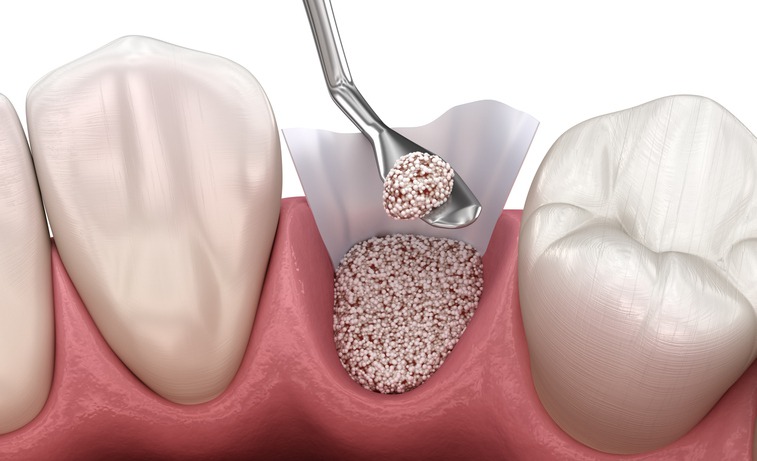Thinking about getting a dental implant can bring up a lot of questions. One common concern is the need for a dental bone graft. While not everyone needs this procedure before getting an implant, it’s crucial to understand when it might be necessary. Let’s explore this topic in straightforward terms to help you make informed decisions.
What Is Dental Bone Grafts?
Before discussing when a dental bone graft is required, let’s define a bone graft. In simple terms, a dental bone graft involves enhancing or replacing bone where it’s not sufficient. This process is often necessary in areas where bone loss has occurred, impacting the ability to support an implant.
Why Might You Need a Bone Graft?
Bone grafts are typically needed when there’s not enough natural bone in your jaw to support a dental implant. This could be due to several factors:
-
Tooth Loss: When you lose a tooth, the bone surrounding it may start to deteriorate since it no longer has support. Over time, this can lead to insufficient bone for dental implants, making a graft necessary to restore stability.
-
Periodontal Disease: Gum disease can cause the bone supporting your teeth to diminish. As the disease progresses, it can lead to significant bone loss around the teeth, requiring a bone graft to regain support for implants.
-
Injury: Trauma to the jaw or mouth can damage the bone structure, potentially resulting in a need for a bone graft. This procedure helps repair and rebuild the bone to provide a solid foundation for dental implants.
In such cases, a bone graft can restore or regenerate the bone, creating a stable foundation for implants.
When Is a Dental Bone Graft Necessary?
Now that we know why bone grafts are important let’s discuss situations where they may be deemed necessary:
Assessment by Your Dentist
Your dentist or oral surgeon will use imaging tests like X-rays or CT scans to evaluate your jawbone. They’ll look for:
-
Bone Height: Is there enough height for an implant?
-
Bone Width: Is there adequate width to support an implant?
-
Bone Density: Is the bone healthy and dense enough?
If any of these factors are lacking, a bone graft might be recommended to ensure success with the implant.
Types of Bone Grafts
There are a few different types of bone grafts that may be used:
-
Autografts: Bone taken from another part of your body.
-
Allografts: Bone taken from a donor.
-
Xenografts: Bone from another species, often cows.
-
Alloplasts: Synthetic materials that stimulate bone growth.
The choice of graft material depends on factors like your health, preferences, and the extent of bone loss.
What Is the Bone Grafting Procedure Like?
If the need for a dental bone graft in New York City arises, understanding the procedure can ease some anxiety. Here’s a simple rundown:
Initial Consultation
Your journey will start with a consultation where the dentist examines your mouth and reviews your medical history.
The Procedure
The actual bone grafting procedure is generally straightforward:
-
The area is numbed to prevent discomfort.
-
The gum around the affected area is gently opened to expose the bone.
-
The chosen bone material is placed and secured.
-
The gum is closed with stitches, allowing for healing.
After the procedure, your dentist will discuss the healing process and provide care instructions.
The Healing Process
Healing from a bone graft can take several months, during which the new bone integrates with your existing bone. Patience is key, and regular follow-ups help ensure everything is on track.
Taking Care of Your Gums and Jaw
Proper care after a bone graft is crucial:
-
Follow your dentist’s recovery plan and medications.
-
Maintain oral hygiene while avoiding the surgical area.
-
Attend all scheduled follow-up appointments.
How Does a Bone Graft Enable Successful Implants?
Bone grafts play a vital role in the success of dental implants by providing the necessary support and stability. A well-integrated graft enables the implant to function like a natural tooth, offering both aesthetic and functional benefits. For more in-depth knowledge on implants, consider exploring options and procedures to learn more here about dental implants, which could be beneficial for those considering this dental path.
Considering Your Options
Whether or not a bone graft is necessary for you can depend on several personal factors. It’s essential to work with your dentist to explore the options, especially if you’re considering implants in a major area. You could visit this website for additional insights and support in making your decision.
Final Thoughts
Understanding when and why a dental bone graft is necessary can greatly ease any concerns you may have about getting dental implants. This clarity helps you make informed decisions, allowing you to approach the process with confidence. Consistent communication with your dental provider is key; they’ll guide you through every step, ensuring you’re comfortable and well-prepared.
By following their expert guidelines and staying informed, you can look forward to achieving a healthier, more confident smile. Remember, taking proactive steps in your dental health journey is an investment in your overall well-being and quality of life.




